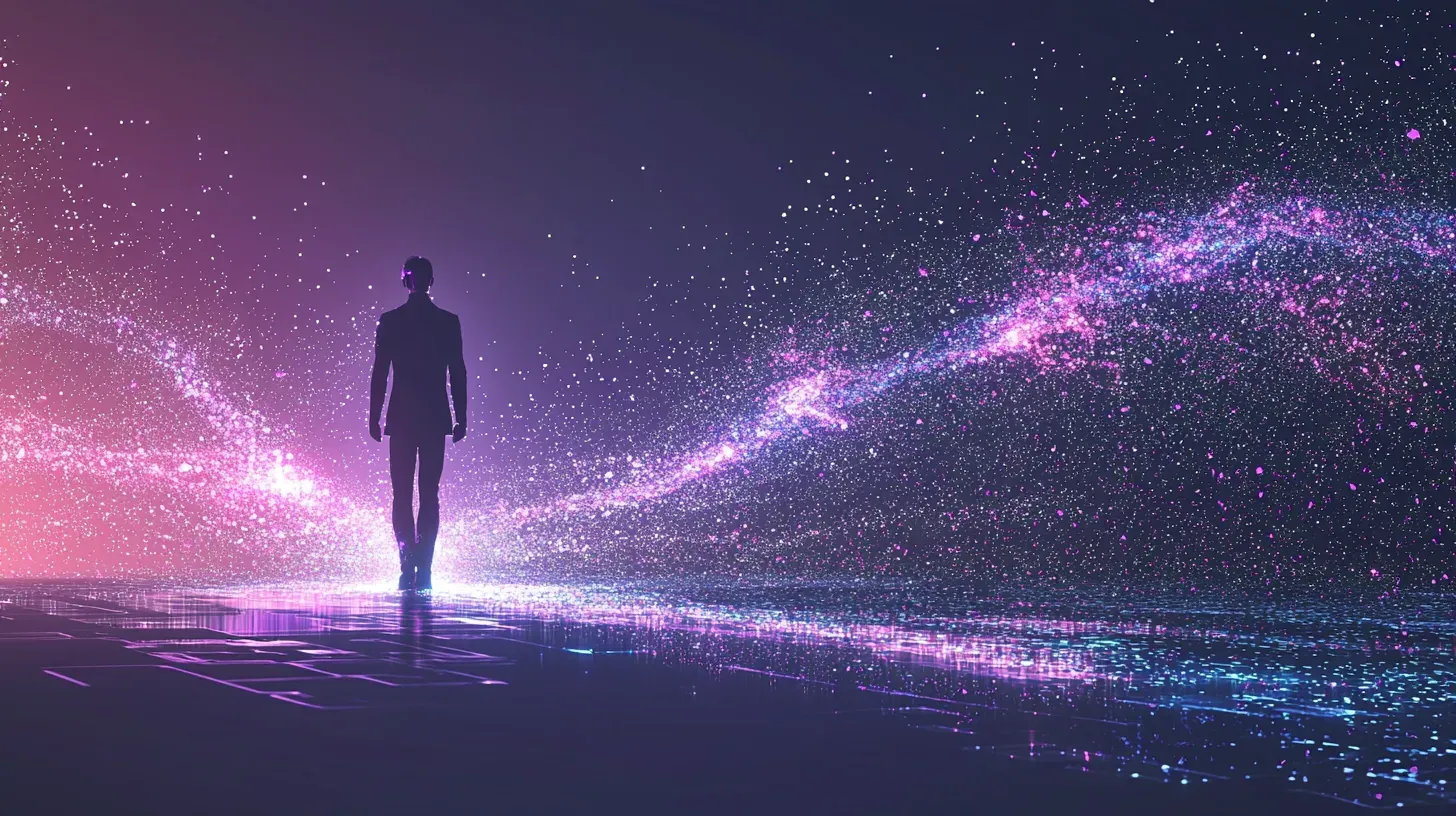The Top 5 Technology Trends for 2022: The Year of Decentralisation
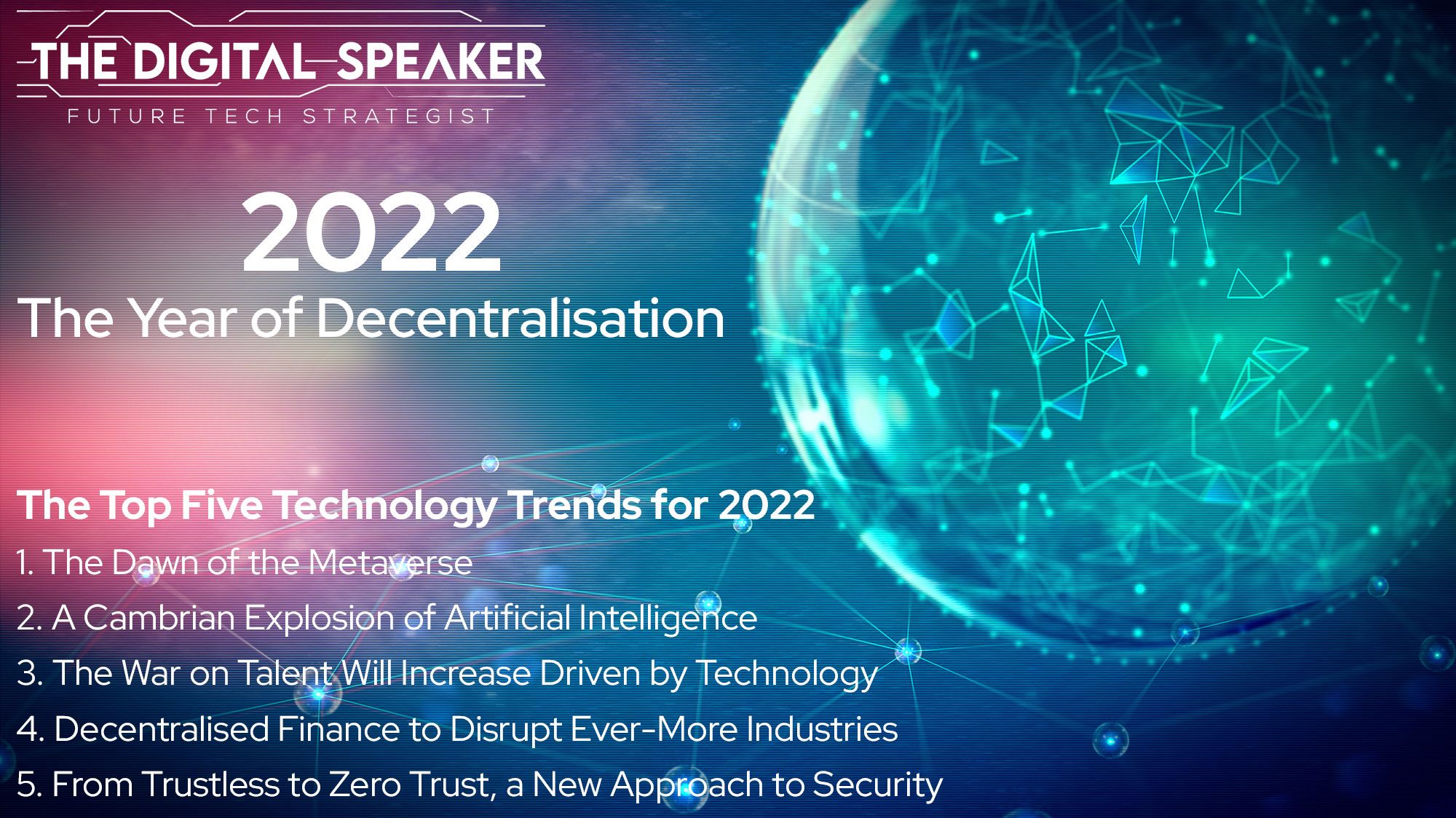
Last year, I coined 2021 the Year of Digitalism as I foresaw the increase of corporate and governmental data surveillance. Unfortunately, it is safe to say that this has come true with Big Tech becoming more powerful than ever before and governments worldwide implementing Covid tracking apps. What also happened is that the Pandemic has been a strong catalyst for digital transformation in any sector and that the world is currently changing at lightning speed.
There are economic changes such as increasing inflation rates, environmental disasters caused by climate change, social changes such as The Great Resignation, and a convergence of technologies that drives technological changes. Although the world has never changed so fast as in 2021, this year was also the most stable of all the years to come in this decade.
We are at an inflection point that will fundamentally alter the fabric of society and not necessarily for the better. Unfortunately, world leaders were unwilling to come together during COP26 and deliver a plan to fight climate change. As a result, CO2 emissions will continue to rise next year, and we will most like to see more environmental disasters.
Also, the Pandemic is far from over yet. Although the scientific miracle of the coronavirus vaccines has saved thousands of deaths, the new Omicron variant could potentially impact many people worldwide. Even if it doesn't, there are still too many people who have not yet received the vaccines, either deliberately or because of lack of vaccine availability in developing countries.
The Pandemic is also responsible for the current inflation and supply-chain issues around the world. The global chip shortage won't be solved any time soon, and global industries could further be disrupted if the primary producer of chips, Taiwan, is drawn into conflict with China.
Finally, we are amid an exponential technology wave. Due to the convergence of technologies such as artificial intelligence, quantum-, nano- and edge computing, blockchain and VR/AR, organisations and industries experience disruption unlike anything seen before. Depending on how we humans apply technology, this disruption can be either positive or negative for humanity.
The announcement of Meta, for example, has already been a catalyst for the metaverse, further driving investments in VR and AR as well as blockchain, crypto and AI. Although Zuckerberg announced spending $10 billion in the coming year alone on the metaverse, it is no secret that I am not a fan of Meta and Zuckerberg. Especially because Facebook is knowingly polarising and disrupting societies across the world. The amount of data Meta is expected to collect using VR and AR devices will diminish the data they already collected in the years past. Think of eye-movement data, emotional data, how your hands look like or your room and the products and people inside it. All gathered to drive Meta’s advertising business and thereby further strengthen its influence and grip on global societies.
Fortunately, the developments in Web 3.0, including NFTs, decentralised storage, computing power and bandwidth and cryptocurrencies, are unstoppable. Eventually, users and content creators will opt for independence from Big Tech and enjoy the benefits of data ownership, empowerment, and self-sovereignty. 2022 will see significant developments in this field as distributed ledger technologies are maturing. Therefore, I would like to call 2022 the Year of Decentralisation.
Let’s dive into the top five technology trends for 2022 that I foresee for next year. Here are five technology trends to watch:
1. The Dawn of the Metaverse
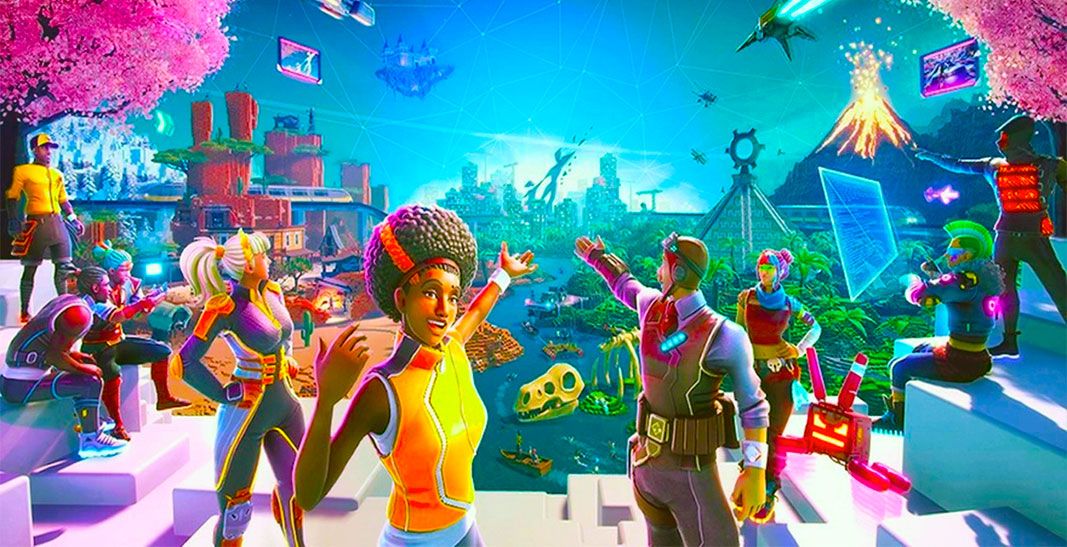
The first trend to watch is, of course, the metaverse. By no means will we be living in the metaverse next year. It will probably take another 5-10 years before we can fully immerse ourselves in a phygital world (I know, a horrible word, but it succinctly describes the convergence of the physical and digital worlds).
Currently, I am writing my fourth book, this time about the metaverse, which is due for publication by Wiley in Q2 2022. Already, I have spoken to dozens of stakeholders actively involved in building the metaverse, and there are two things clear to me about the metaverse:
1. The metaverse is as far as the internet was in 1995, and the metaverse will have as big an impact on society as the internet had. It will completely change how we work, live, and socialise, and those organisations that are too late to adapt will cease to exist. The metaverse will be driven by the gaming industry, which is already bigger than the movie and music industry combined.
2. The metaverse is not all about fun. Serious dangers are lurking on the immersive internet. Like the negative impact of cybercrime on web 2.0, cybercriminals will embrace the metaverse and discover that, especially in the beginning, it is the Wild West. Metaverse-natives such as Generation Z and Generation Alpha might be able to dodge these attacks; others will lose their money, or worse, their identity.
The required technology to move from a centralised web to a decentralised web is getting closer to being ready for mass adoption. In addition, AR and VR hardware will get better, lighter, and cheaper. Albeit that last one might not apply to Apple’s rumoured headset, which might arrive at the end of 2022. Combined, next year will see more decentralised applications that are easier to use and have better UI, marking the dawn of the metaverse.
2. A Cambrian Explosion of Artificial Intelligence
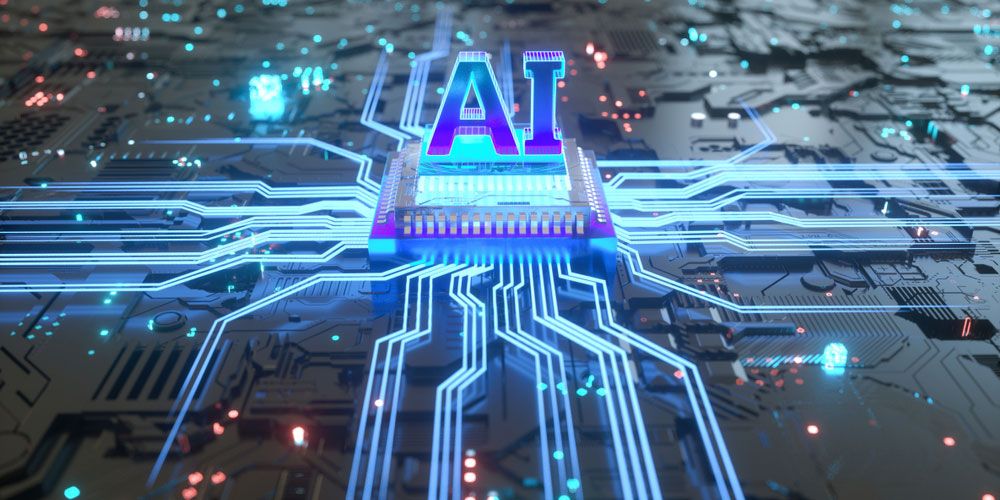
From huge generative pre-trained transformer models to synthetic data use cases and tiny machine learning models operating on the edge using AI-specialised chips, 2022 will see an explosion of AI. Rapid developments in deep learning and neural networks driven by companies such as DeepMind will see new breakthroughs similar to AlphaFold. All in all, 2022 will be see a Cambrian Explosion of artificial intelligence, edging us ever closer to Artificial General Intelligence.
Most of the developments will occur in the experimental research, and only later will they become available for mass adoption. Similar to how new technologies developed by NASA or Formula 1 eventually become available in our cars, homes and offices. Nevertheless, artificial intelligence and machine learning will play an increased role in automating our jobs.
For the non-coders or non-data scientists, this will result in more advanced robotic process automation (RPA) that will enable employees and managers doing office work to further automate their work without knowing how to code. Consequently, employees will get more work done because RPA can now automate most of the monotonous jobs.
Of course, if non-developers can use AI and ML to automate (parts of) their jobs, those with coding skills can apply the same tactics. Already, GPT-3 is used to write code faster, but in 2022 we will also see more advanced, automated, and intelligent hacking. Increasingly, hackers will turn to AI to get more work done, penetrate organisations faster and steal more data and money. At the same time, the people defending their companies will also turn to AI. Increasingly, both hackers and IT security staff will use AI, resulting in a battle at the speed of light and leading to better tactics on both ends.
3. The War on Talent Will Increase Driven by Technology

In May 2021, amid the Pandemic, Anthony Klotz coined the term The Great Resignation. Based on his research, the Professor of Management noticed that the Pandemic has caused people to reflect on their lives. More people started to value family time, having seen the benefits of remote work, reduced commuting time and the ability to focus on passion projects.
Of course, this was all possible due to a plethora of technologies that facilitate remote work. It has become easier than ever to manage your day, adhere to your sleeping patterns and be more productive than ever before. This awakening, combined with an ongoing Pandemic, will result in more people deciding to follow their passions. People resigning from their current jobs and looking for a new job are no longer geographically bound to work where they live. This is good for employees, as suddenly, the world is their oyster. However, the same applies to those organisations fully embracing remote work. They, too, will be able to fish in a much bigger talent pool.
Altogether, the war on talent will remain, albeit on a much bigger scale. Employers have access to more employees anywhere in the world, but they can also opt for replacing those jobs with ever-improving AI or robotics, depending on the job to be done. Employees are no longer restricted to what is available in their geographical neighbourhood and can become more selective. Most importantly, remote working technologies will become more advanced and intuitive, if anything, because of the dawn of the metaverse, where collaboration across the digital highway will become the norm.
4. Decentralised Finance to Disrupt Ever-More Industries
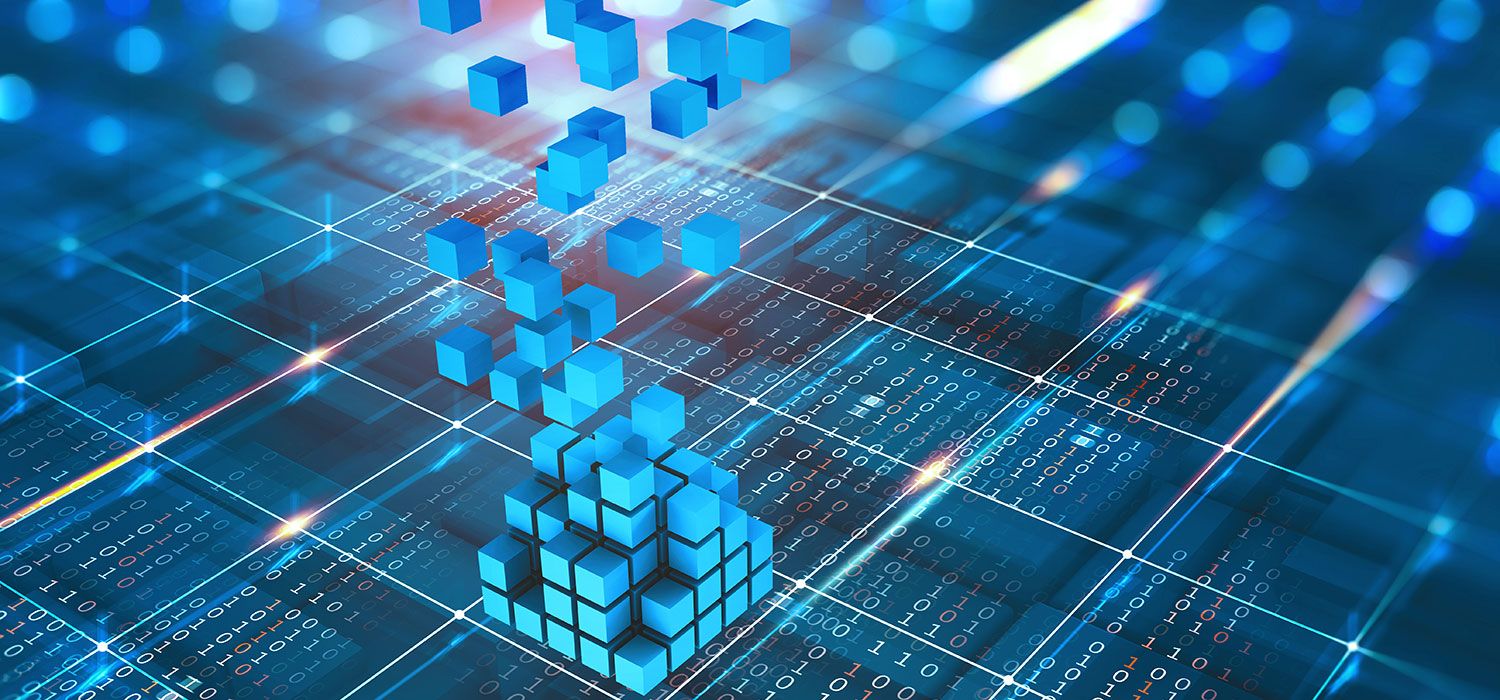
Thanks to the current hype of NFTs, Decentralised Finance (DeFi) will create significantly more opportunities for people to take their financial lives into their own hands. Non-Fungible Tokens (NFTs) are a fantastic technology that, apart from enabling JPEGs to be sold for millions of dollars, make it possible to prove ownership of a digital asset. Regardless of what that digital asset is. Similar to in the real world, once you can prove ownership, an asset becomes tradeable and exchangeable and drive economic growth.
NFTs offer some unique characteristics that will completely redefine our economic system, including:
- Fractional ownership: while the utility of an NFT is indivisible, the ownership of the underlying digital asset is not. A (digital) asset can be owned by multiple people, each sharing in the benefits of the particular underlying digital asset;
- Digital scarcity: similar to Bitcoin, digital assets can become scarce. Instead of unlimited digital copies, digital assets can become limited editions based on how many NFTs have been minted.
- Uniqueness: Non-Fungible means that you cannot trade one for the other as no NFT is the same. They are all unique.
- Transparency and authenticity: due to the blockchain, how an NFT has been transferred is publicly visible, and we can see which wallet owns the NFT. If you can prove ownership of a wallet, you verify ownership of said NFT.
- Interoperability: already, NFTs can be traded across blockchains thanks to decentralised bridges.
Once NFTs become mainstream, they will redefine our financial infrastructure. Let’s look at a comparison: In the real world, if you own a piece of land or real estate or art or a car, you can rent it out or sell it to someone and become a landlord, art dealer or car hiring company. Or you can mortgage your real estate to get more money and buy more property with that to make more money. The bank can then package those mortgages and insure them or sell them onwards to another bank and make tons of money. Now replace a real-world asset with any digital asset linked to an NFT and replace the bank with smart contracts, and you have Decentralised Finance. This is a very simplified way of explaining, but it shows the unlimited potential it has. The disruption brought by NFTs will completely change the traditional finance industry because their providers will become redundant in a decentralised world.
Apart from revolutionising the finance world, NFTs will also bring completely new ways of earning an income. Ranging from play to earn, to read to earn, stream to earn, or ‘whatever you can come up with’ to earn. Once you earned, minted, or bought an NFT, you can rent it out, borrow against it, license it, sell it, package it, insure it and make money with it. Decentralised Autonomous Organisations (DAOs) will enable any (niche) community to come together and raise funds to borrow or buy any NFT. A great example is the DAO Constitution that managed to crowdfund $47 million in days from crypto lovers in an attempt to buy a copy of the US constitution. Although they were outbid, it shows the power of DAOs.
Another new type of funding is the crowd loan currently happening as part of the parachain auctions of Polkadot. In the past weeks, the crypto community already contributed $3.7 billion in DOTs to help their favourite Polkadot project win an auction and obtain a parachain slot.
If this sounds crazy, better get used to it. In 2022, we will see more applications of Decentralised Finance, empowering content creators, crypto owners and innovators to make money without the involvement of traditional financial institutions.
5. From Trustless to Zero Trust, a New Approach to Security
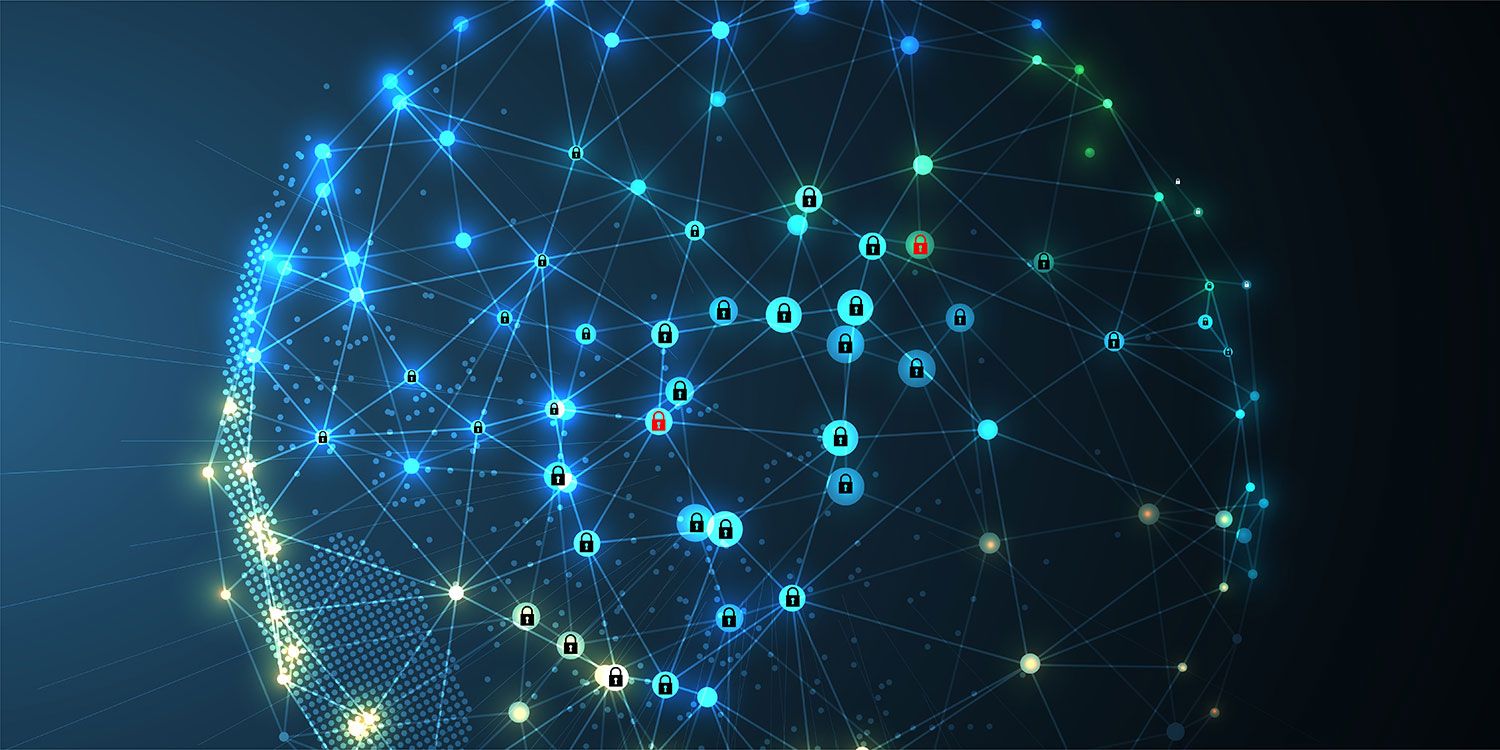
If the past decades have proven us anything, the current approach to (enterprise) IT is no longer working. Hackers, scammers, deep fakes, malware, phishing attacks and many more digital criminal activities are causing great havoc worldwide. With an ever-increasing number of cyber attacks and global damages due to cybercrime to grow to $10 trillion in 2025, zero trust will become more critical than ever before.
The idea of zero trust is that anyone or anything attempting to access a network is deemed untrustworthy by definition and is, therefore, a threat to the system. Above all, it is a way of thinking that network administrators and engineers should embed in their architecture to protect the organisation from outside and inside threats. The term Zero Trust was first coined by John Kindervag from Forrester Research in 2010.
A zero trust architecture requires strict identity verification for everything and anyone willing to connect. It offers multiple benefits to traditional architecture, including protection of (consumer) data and a more efficient security stack and protocol.
A zero trust architecture might seem similar to a trustless system, but these are actually very different. Yes, in both instances, cryptography plays a key role. Still, a zero-trust architecture is heavily centralised to protect whatever requires protection (data, services, a system, etc.). In contrast, a trustless system uses cryptography to achieve a single source of the truth using a decentralised ledger, a.k.a. a blockchain.
With the datafication of our society at an all-time high and almost all organisations around the world involved in some digital transformation, both zero trust and trustless systems will become more and more critical in 2022. Add to this the developments of quantum computing that will make today's encryption useless, and there is no time to waste for organisations to change their approach to data. Fortunately, both the centralised approach of zero trust and the decentralised, trustless system can operate perfectly alongside each other. Both are required with the ever-increasing cyber threats, and 2022 will see a significant increase in the adoption of these systems.
Conclusion
In the coming year, we can expect more radical change to happen, and at the end of 2022, humanity will have become closer to a digital-native species. Organisations can no longer postpone their digital transformation projects, and anyone should work hard to remain up to date with the latest technologies.
Moreover, change is speeding up. If organisations want to remain relevant, they must be vigilant and focused. They should foster an adaptive and flexible culture where people can explore and experiment with new technologies and share their learnings internally. That is the only way organisations will be able to remain relevant in this ever-increasing pace of change. Already, the lifespan of large organisations has decreased significantly in the past decades. New unicorns appear and disappear faster and faster, which will only increase in the years to come.
Of course, the five technology trends discussed here are only the tip of the iceberg. The dawn of the metaverse is here, and hopefully, we will be able to fix the issues of Web 2.0 and build a decentralised, user-controlled metaverse. NFTs will play a vital role in this upcoming metaverse. They will open a plethora of new business models and financial models governed by smart contracts instead of financial institutions. With work becoming more decentralised and geographically distributed, and trustless systems becoming more important, 2022 truly will be the Year of Decentralisation. Of course, not all systems can be decentralised. The Cambrian Explosion of AI will, even more, require a Zero Trust Architecture as cybercriminals also have access to ever-more sophisticated AI.
Above all, to remain relevant in 2022, organisations and individuals should try to stay on top of the latest developments in technology. Once you have missed the train, it won't be easy to get on board again, and 2022 might very well be the last stop before take-off.
Images: Stock, Shutterstock, Unit 2 Games Limited




